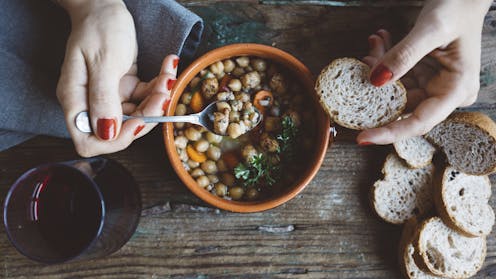
“Protein goals” have long dominated the health discussions on social media platforms like TikTok and Instagram. However, a new trend is emerging: “fibre goals.” This shift reflects a broader focus on overall health and wellbeing rather than a narrow concentration on weight loss or muscle gain.
Foods rich in fibre are among the most beneficial for our health. A lack of sufficient fibre can lead to constipation, haemorrhoids, and increase the risk of chronic diseases such as heart disease, type 2 diabetes, and bowel cancer. So, what does the expert evidence say about “fibre goals” and how can you achieve them?
Understanding Dietary Fibre
Dietary fibres are the indigestible parts of plant foods. Unlike other carbohydrates that break down into sugar, these complex carbs pass through our digestive tract mostly unchanged. There are two main types of dietary fibre:
- Soluble fibres dissolve in water to form gel-like substances. They are found in fruits like apples and berries, vegetables such as sweet potatoes and carrots, as well as legumes and oats. Soluble fibres can slow down digestion, help us feel fuller longer, support heart health, lower blood cholesterol, and regulate blood sugar levels.
- Insoluble fibres do not dissolve in water but add bulk to food. These are found in wheat bran, fruits and vegetable skins, nuts and seeds, beans, and whole grain foods. Insoluble fibres help regulate bowel movements and reduce constipation.
Additionally, resistant starch is a type of complex carbohydrate that isn’t technically a fibre but behaves like one. It resists digestion and feeds gut bacteria, found in legumes, cooked potatoes, and undercooked pasta. Most fibre sources we consume contain both soluble and insoluble forms, such as oats, apples, and avocados.
Setting and Achieving Fibre Goals
Determining your fibre goal can be challenging as there is no quick lab test to measure it. A simple indicator is the efficiency of your digestion. If you’re rarely constipated, you’re likely getting enough fibre. The National Health and Medical Research Council recommends daily fibre intakes that vary by age and gender. Generally, adult men should consume about 30 grams of fibre per day, while women should aim for about 25 grams.
It’s difficult to consume too much dietary fibre; even eating 50 grams per day is not considered harmful. To meet your fibre goal without overthinking it, focus on incorporating a variety of fibre-rich foods into your diet:
- Fruits
- Vegetables
- Nuts
- Seeds
- Legumes
- Beans
- Wholegrain or wholemeal breads and cereals
The federal government’s Australian Dietary Guidelines suggest a daily intake of two serves of medium-sized fruits, five serves of vegetables, and two to three serves of nuts, seeds, or legumes.
Practical Tips and Considerations
When increasing your fibre intake, here are some important things to remember:
- Avoid drastic changes like cutting out entire food groups or nutrients unless advised by a health practitioner.
- Incorporate both soluble and insoluble fibres for their different benefits.
- Avoid a sudden increase in fibre, which can cause abdominal pain and increased flatulence. Start by adding one or two high-fibre foods each day and gradually increase over a few weeks.
- Fibre needs water to work effectively, so drink plenty of fluids. Aim for at least eight to ten glasses of water per day.
Eating well doesn’t need to be a competition. It’s encouraging to see people sharing ideas on social media about increasing fibre intake and setting fibre goals, but it’s important to do it without obsessing over food. Focus on gradual changes and incorporating fibre-rich foods naturally into your diet. Simple switches, like opting for wholemeal or wholegrain varieties over refined grains, can make a significant difference.
Expert Insights and Final Thoughts
According to Saman Khalesi, a committee member for Nutrition Society Australia Queensland Group, and Chris Irwin, from the Queensland Regional Group, the key is listening to your body and making informed choices. If you experience any digestive discomfort or have conditions like irritable bowel syndrome, consult with a healthcare professional.
Seyed Farhang Jafari, who has disclosed no relevant affiliations beyond their academic appointment, emphasizes that while setting fibre goals is beneficial, it should be approached with balance and mindfulness.
As the conversation around “fibre goals” continues to grow on platforms like TikTok, it represents a positive shift towards holistic health and wellness. By making informed dietary choices and listening to expert advice, achieving your fibre goals can be a seamless and healthful journey.







